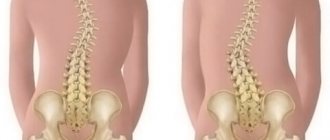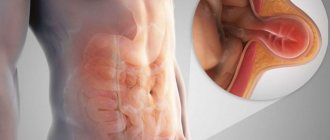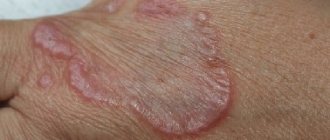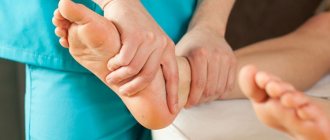Autoimmune arthritis
is a disease that appears as a result of disorders that occur in the immune system when one’s own tissues are perceived as foreign. Immune cells against them begin to produce special proteins that cause an inflammatory process in the lining of the joints, cartilage and blood vessels. There are several forms of arthritis, many of which are autoimmune in nature.
Causes of the disease
Inflammation of the joints of the musculoskeletal system is a pressing problem for modern people. Rheumatoid arthritis, which is a type of autoimmune disease, mainly affects people of working age after forty years, and it is five times more common in women than in men. The main causes of joint disease are considered to be:
- Genetic predisposition associated with abnormal chromosome structure. Blood relatives are four times more likely to have rheumatoid arthritis.
- Infections - viral diseases: rubella, herpes, retrovirus, Epstein-Barr. All of them are factors contributing to the development of the inflammatory process in the joints.
- Unfavorable environmental conditions: radioactive radiation, constant exposure to low temperatures, chemical pollution.
- Systematic stressful situations, emotional overload. Autoimmune arthritis in the female half of the population often occurs during pregnancy, after childbirth, abortion, and during menopause.
- Rapid increase in body weight.
- Alcohol and tobacco addiction.
All of the above factors contribute to the development of the inflammatory process, primarily in the cartilage tissue of the joints.
Classification
Arthritis, depending on the cause and clinical form, is of the following types:
- rheumatoid arthritis associated with malfunctions of the immune system;
- rheumatic, with chronic connective tissue disease with predominant damage to the heart and joints;
- ankylosing spondylitis, or ankylosing spondylitis - inflammation of the joints of the spine;
- infectious, with direct penetration of infectious agents into the joint;
- reactive arthritis - an immune response to a previous infectious disease;
- psoriatic arthritis is a chronic immune-mediated inflammatory disease of the osteoarticular system that develops in patients with psoriasis;
- gouty – occurs due to the deposition of uric acid in the joints;
- inflammation in systemic connective tissue diseases, for example, systemic lupus erythematosus;
- arthritis due to diseases of the gastrointestinal tract, lungs and other organs and systems;
- traumatic, occurring after an injury;
- juvenile idiopathic arthritis in children under sixteen years of age.
Based on the number of joints affected, monoarthritis is distinguished with inflammation of only one, oligoarthritis, if two or three areas are affected, and polyarthritis - a disease of more than three joints.
The process can be acute or chronic. In the first case, it develops rapidly, accompanied by severe pain and inflammation in the tissues. Chronic disease progresses gradually, slowly turning into a serious disease.
Symptoms
In the early stages, the disease is most often relatively mild, so patients do not immediately seek medical help. Symptoms of autoimmune arthritis develop gradually, and the development of a full clinical picture of the disease takes several years. Most often, at the very beginning of the onset of the disease in adults, small joints are affected, especially the hands, and in children, on the contrary, large joints are affected. During this period, the patient has only general symptoms. These include:
- weakness;
- malaise;
- loss of appetite;
- weight loss;
- low-grade fever.
The main signs of illness are:
- Morning soreness and joint stiffness for an hour or longer.
- Painful sensations and swelling.
- Characterized by symmetrical damage to the joints of the right and left sides.
- Limitation of functions due to swelling of the joints.
As autoimmune arthritis develops, the following characteristic signs occur:
- Typical deformation of the hands and feet.
- The occurrence of muscle destruction.
- Disintegration of damaged joints, compression of fibers.
In the final stages of the disease, the following are possible:
- The appearance of rheumatoid nodules that do not cause pain.
- Enlarged lymph nodes.
- Inflammation of blood vessels.
- Pathological processes in the kidneys and lungs.
- Heart problems.
- Osteoporosis.
- Gastrointestinal diseases.
- Neuropathy.
- Eye lesions.
Autoimmune disease (arthritis) leads to damage to all organs and damage to small joints of the limbs. Due to the fact that a person may not experience typical joint pain for a long period of time, he comes to see a doctor when significant changes have already occurred in the cartilage and joints, which greatly complicates treatment.
Diagnostics
At first, exacerbations appear in the form of minute attacks, and sometimes last for several days. But abnormal changes in the immune system begin to occur long before obvious signs of illness. It is very important not to miss the initial symptoms of the disease and to visit the clinic on time. Patients often ask: their joints hurt, which doctor should they see? If you don’t know which doctor to visit, you can always ask about it at the reception desk or go to an appointment with a therapist who will examine you and give you a referral to the necessary specialists: a neurologist, rheumatologist, orthopedist and surgeon. Timely detection of the disease makes it possible to slow down its development and improve the patient’s quality of life. When visiting a doctor with a patient, the following is carried out:
- a conversation during which complaints, duration and characteristics of the disease are clarified;
- external examination and palpation are performed;
- a complete anamnesis is collected.
After this, the following laboratory tests are performed to diagnose autoimmune arthritis:
- Clinical blood test - a characteristic feature is an increased erythrocyte sedimentation rate; with the development of the disease, a decrease in hemoglobin occurs.
- Biochemical blood test - nitrogenous waste is detected, the functioning of the liver, pancreas, carbohydrate metabolism is assessed, and blood clotting is checked.
- Blood test for antibodies - their presence and concentration is detected.
- C-reactive protein indicates the development of an inflammatory process.
In addition, to make an accurate diagnosis of autoimmune arthritis, the following hardware tests are prescribed:
- Radiography is one of the important diagnostic methods: determines the presence of damage due to injuries; changes associated with inflammation; joint deformation; bone tissue growth; changes in the joint cavity.
- Ultrasound is often used to identify changes in large joints.
- CT scan – allows you to see the condition of soft tissues.
- MRI is widely used to monitor changes in ligaments, intervertebral discs, and muscle structures.
- Scintigraphy - this method is often used to diagnose arthritis (ICD-10 code M05-M99) and can detect the disease in the early stages.
- Arthroscopy – often used for the knee joint.
- Puncture - performed to take synovial fluid for the purpose of its subsequent study.
After the results of all studies are ready, consultations with specialists are made, an accurate diagnosis is made and appropriate treatment is prescribed.
Arthrosis
Compared to arthritis, this disease is not an inflammatory joint disease. However, damage to the articular cartilage occurs. The cause may be both involutional changes and injuries or wear of cartilage tissue due to excessive loads. Osteoarthritis can manifest as swelling and pain. Also, in some cases, the disease can lead to changes in other organs and systems. It can lead to both a decrease in range of motion and range of motion. Most often, arthrosis affects the hip joints, knee joints, and spinal joints. Osteoarthritis, an infrequently used term to describe degenerative joint diseases. To understand, it is important to first understand the anatomy of the joint. The ends of the bones that form the joint have a smooth surface called the subchondral bone. Behind this is articular cartilage, which is a strong but elastic connective tissue that protects bones, facilitates movement between surfaces, and also acts as a shock absorber. It is this cartilage that forms the articular surface, and not the bones themselves. The joint has synovial membranes that secrete synovial fluid into the joint space, which lubricates the joint surfaces and acts as a shock absorber. The outer joint capsule provides strength to the joint.
Cartilage is elastic connective tissue. Cartilage cells (chondroblasts) produce and secrete a large number of different substances, such as collagen, into the extracellular matrix. It is this matrix that is responsible for the properties of cartilage, namely its strength and flexibility. Sometimes chondroblasts remain inside the matrix and are called chondrocytes. Cartilage is constantly subject to wear and damage. Cartilage cells constantly replenish the cartilage matrix and thus maintain the integrity of the cartilage.
With age, the ability to regenerate any tissue decreases, but does not stop completely. Even in young people, the body's ability to repair tissue is limited by time. If there is constant and excessive wear and tear on the articular cartilage beyond the time required for repair, then the cartilage will weaken. This is the reason why the disease is more common in older people and more often in those who lead an active lifestyle. There are other factors that complicate regenerative processes, such as inflammatory mediators, which affect normal cartilage regeneration when there is even slight inflammation. Likewise, if there are some medical diseases (such as diabetes) that slow down or stop the activity of cartilage cells, the cartilage gradually wears out. When the cartilage weakens, cartilage ruptures occur, and fragments can float in the joint cavity. Bone tissue is also affected by arthrosis and a condition called osteoarthritis occurs.
Symptoms
Symptoms develop very slowly. In the early stages of cartilage erosion, there may be no symptoms. In addition, arthrosis is a degenerative disease, not an inflammatory condition, and therefore may not manifest itself for a long time. Once symptoms begin, the condition gradually worsens, also over a long period of time. The leading symptom of arthrosis is pain.
The pain is usually isolated to the affected joint. The pain usually worsens during and after movement in the affected joint. In milder cases, pain does not appear during movement, but only some time after exercise. There may also be pain on palpation in the joint area. But pain with arthrosis is usually not accompanied by swelling, as is the case with inflammatory phenomena in the joint (for example, with rheumatoid arthritis).
Joint stiffness is another common symptom. This is most noticeable when waking up in the morning and after a long period of rest. Movement can reduce stiffness, but excessive movement will eventually lead to pain. Joint stiffness tends to get worse over time as the disease progresses. Even when joint stiffness decreases, normal range of motion is not restored. Over time, this leads to a significant decrease in motor activity. The joint may also experience a crunching sound when moving, especially as the disease progresses. Normally, the articular cartilage at the ends of bones rubs against each other, but due to the smooth surface and good lubrication by synovial fluid, this friction does not lead to the appearance of sounds. With arthrosis, the cartilage surface is not so smooth and this leads to the appearance of sounds when moving in the joint (crunching, grinding). Firming – large joints, such as the knees, become firmer to the touch. Bone growths that occur with arthrosis (osteophytes) form over time and can be felt under the skin in the form
Diagnostics
As a rule, diagnosis does not present any particular difficulties and is based on a combination of examination data and instrumental data (radiography, CT, MRI, ultrasound of joints). But given that arthritis also causes changes in cartilage tissue, a careful differential diagnosis of degenerative changes in joints with the consequences of a long-term inflammatory process is necessary. Therefore, laboratory diagnostics are also necessary when diagnosing arthrosis.
Treatment
The disease is more often observed in older people and therefore treatment is most often symptomatic. The key to conservative treatment is to reduce symptoms of pain and improve joint functionality. Drug treatment (for example, NSAIDs) should be prescribed taking into account the concomitant somatic pathology present in older people. A good effect is achieved by intra-articular injection of synovial fluid endoprostheses (Fermatron, Ostenil, etc.), which reduces friction in the joint, improves joint function and reduces pain. Intra-articular administration of long-acting steroids (for example, diprospan) is also possible. Recently, prolotherapy has begun to be used, which consists of introducing substances into tissues that improve the regeneration of connective tissue.
Physiotherapy can quite effectively reduce pain and reduce inflammation.
Exercise therapy. Dosed physical activity allows you to maintain the functionality of the joints, but the loads must be selected carefully, since excess loads lead to increased pain.
Surgery. In case of severe arthrosis of large joints (for example, coxarthrosis or gonarthrosis) and significant dysfunction of the joint and persistent pain, endoprosthetics is recommended.
Therapy methods
The most important tasks in the treatment of arthritis are:
- Reducing the inflammatory process in the synovial area to maintain and normalize the dynamic ability of the joints.
- Preventing the development of a destructive process.
Treatment methods for autoimmune arthritis include a whole range of different measures:
- Relieving symptoms – most often you have to deal with painful sensations. They can be easily treated with NSAIDs.
- Basic therapy - it begins immediately after the disease is detected. With the correct prescription of drugs, it is possible to relieve inflammation and achieve remission for a long period. First-line drugs, for example, Methotrexate, are especially effective; second-line drugs are less effective and are used if the first are intolerant.
- Local treatment - rubbing with ointments and other means are used, for example, compresses for joints with Dimexide.
- Physiotherapeutic procedures eliminate inflammation and reduce pain. Used at various stages of the disease.
- Surgical intervention is used extremely rarely if there is no effect from conservative treatment.
- Folk remedies - used only after consultation with a doctor. Very often, traditional healers recommend burdock and bay leaves.
- Dietary nutrition is an invariable condition for the successful fight against arthritis.
Glucocorticosteroids
If NSAIDs are insufficiently effective, as well as with synovitis, intra-articular administration of corticosteroid drugs is recommended -
Diprospan
Kenalog
Their administration quickly relieves pain and inflammation, but given that these drugs are hormones, their use is limited. It is believed that no more than 5 intra-articular injections are permissible with an interval of at least 5 days between them, after which it is necessary to refrain from administering them for several months in order to avoid the development of side hormonal effects and adrenal insufficiency.
Drug therapy
The following groups of drugs are used to treat autoimmune joint disorders:
- The main ones help slow down destructive and inflammatory processes in the joints: Chlorbutin, Cyclophosphamide, Plaquenil. To suppress autoimmune failure, medications are selected by an immunologist. They help restore immune processes.
- Local – medical products used for external use. They relieve inflammation, swelling, and reduce pain in the affected joint. For this purpose, compresses with Dimexide are prescribed for joints affected by arthritis, as well as Hydrocortisone and Novocaine.
- Symptomatic – non-steroidal drugs that have an anti-inflammatory and analgesic effect. These include: Ibuprofen, Voltaren, Ketonal.
Treatment requires long-term use of medications that have serious side effects. Therefore, constant laboratory monitoring of their effects and timely detection of side effects is necessary. To achieve success, it is very important to follow all the recommendations of your doctor and trust him.
Rheumatoid arthritis: what is it and how is it treated?
Rheumatoid arthritis is an autoimmune-inflammatory disease. It affects more often women of different ages, and the joints of the ankles, knees, hands and ankles are affected.
It is believed that the cause of rheumatoid arthritis is a malfunction of the immune system, and provoking factors are hypothermia, stress, infection or injury. The mechanism of joint destruction can be triggered by influenza, tonsillitis or a common ARVI. Recognizing the disease is quite simple:
- the joint swells and hurts (swelling can last from several months to several years);
- joints are affected symmetrically - on both arms or legs;
- the pain intensifies at night or in the morning, subsides or goes away in the evening;
- rheumatoid nodules the size of a pea form in the joint; they are dense to the touch;
- weakness, loss of appetite, chills and a slight increase in temperature are present.
Unlike arthrosis, in which pain, on the contrary, intensifies after physical activity, with rheumatoid arthritis, warming up the joint helps get rid of discomfort.
Over time, the joints become deformed and limited in mobility. The disease affects all new joints. Pathological fluid accumulates in the knee - a Baker's cyst is formed with the risk of rupture. The cervical spine often becomes inflamed - pain appears in the neck and under the back of the head.
Sometimes people with rheumatoid arthritis lose significant weight
Physiotherapy
Physiotherapy is an integral part of complex treatment for arthritis (ICD-10 code M05–M99) of the joints. Some of them are used during the acute period of the disease. Procedures that are done for inflamed joints:
- electrophoresis with glucocorticoids;
- ultraviolet radiation.
They relieve inflammation and pain.
At other stages of the disease the following is prescribed:
- magnetic therapy;
- laser irradiation;
- phototherapy using lamps;
- massage and self-massage;
- mud baths;
- hydrotherapy.
Therapeutic gymnastics is very important for damaged joints. It helps improve their mobility and prevents the formation of adhesions. The patient should perform exercises daily from the very beginning of the diagnosis, excluding the time of exacerbation of the disease. In addition, patients with autoimmune arthritis should receive an annual course of sanatorium-resort treatment, and the use of essential medications is not canceled.
Diet for arthritis
It is very important to observe limited nutrition in case of autoimmune disorders, not only during exacerbation of the disease, but also during remission. Dietary nutrition involves excluding fatty and fried meat and fish products, strong broths, canned food and semi-finished products from the diet. It is necessary to reduce the consumption of salt and sugar. It is not advisable to eat corn, whole dairy products, wheat porridge and rye bread. Dishes consisting of products of plant origin, lean sea and river fish, lean poultry, rabbit and calf are useful for arthritis. For drinking, use infusions of rose hips and herbs, fruit drinks from berries, green tea, and mild mineral water without carbonation.
Surgery
Experts resort to surgical intervention for arthritis only when all methods of conservative therapy have been tried. During surgical intervention, the use of two techniques is of greatest importance:
- synovectomy – removal of the articular synovial membrane;
- complete joint replacement with an endoprosthesis.
The decision to replace a joint is made by an orthopedist together with a rheumatologist. The operation is performed when the joint is very deformed and has lost its ability to move. And the most important thing is the patient’s desire to undergo surgery. In this case, the postoperative period is much more successful. An artificial prosthesis can last from 5 to 15 years. The patient needs to take care of the new joint and limit its mobility.
Chronic disease of joint tissues, which subsequently affects cartilage and bone structures, is a very serious illness. In the absence of proper therapy, it constantly progresses and leads to disability. Only comprehensive treatment and patient compliance with all doctor’s recommendations leads to remission.
Don't delay your visit to the doctor. Self-medication, as well as unauthorized withdrawal of medications, is unacceptable for this disease. They will result in deterioration of health and progression of the disease.
You can make an appointment at the Canon clinic on the website or by phone +7







